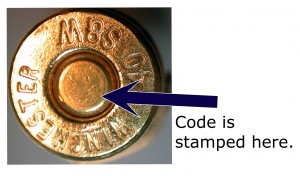Traditional firearm identification is based upon the fact that every weapon has unique features introduced during manufacture and later caused by wear. These characteristics of a firearm create striated and impressed marks on fired ammunition that enable an examiner to identify a round of fired ammunition as coming from a particular gun. This analysis requires an examiner to have access to a suspect firearm that can be test fired to produce a bullet and cartridge case.
A method called microstamping could radically change firearm identification practice. Using lasers, unique alpha-numeric codes are added to certain parts of a firearm, such as the firing pin and breech face, and these identifiers are stamped onto a cartridge when fired. A code could reveal a firearm’s manufacturer, model, and serial number. The serial number alone would lead investigators to the identity of the person who first purchased the firearm.
Proponents of microstamping claim that the technique would not only aid a criminal investigation, but also would reduce the supply of illegal firearms. Microstamping, the argument goes, would deter people with clean records (straw buyers) from purchasing guns for criminals.
Since the technique was proposed, microstamping has generated controversy about the method’s reliability. A study posted on the New Yorkers Against Gun Violence website indicates that microstamping works.

